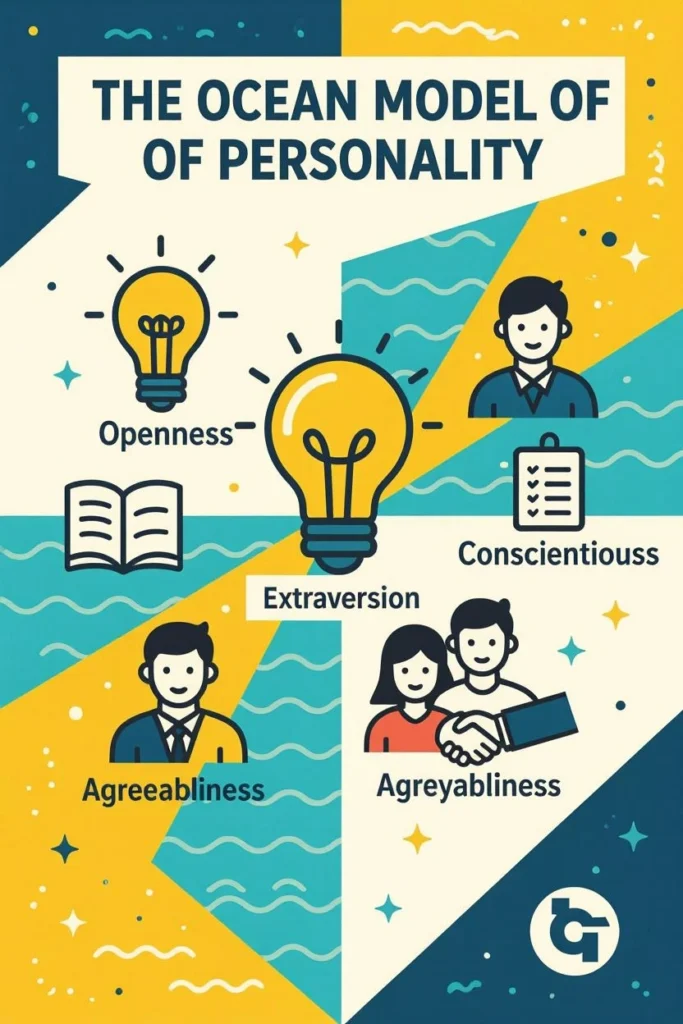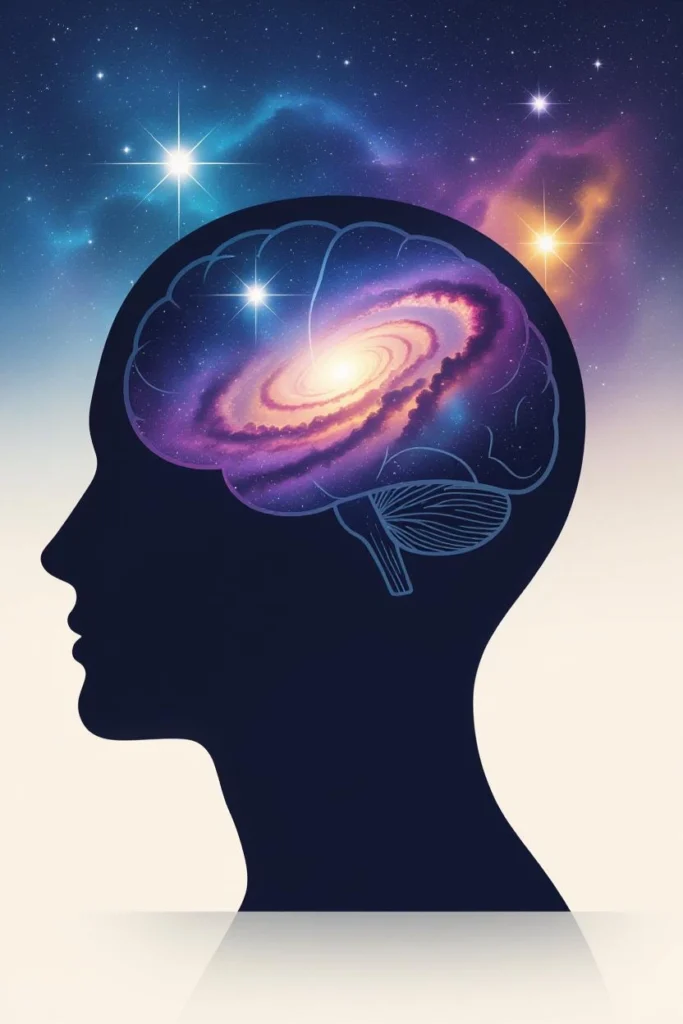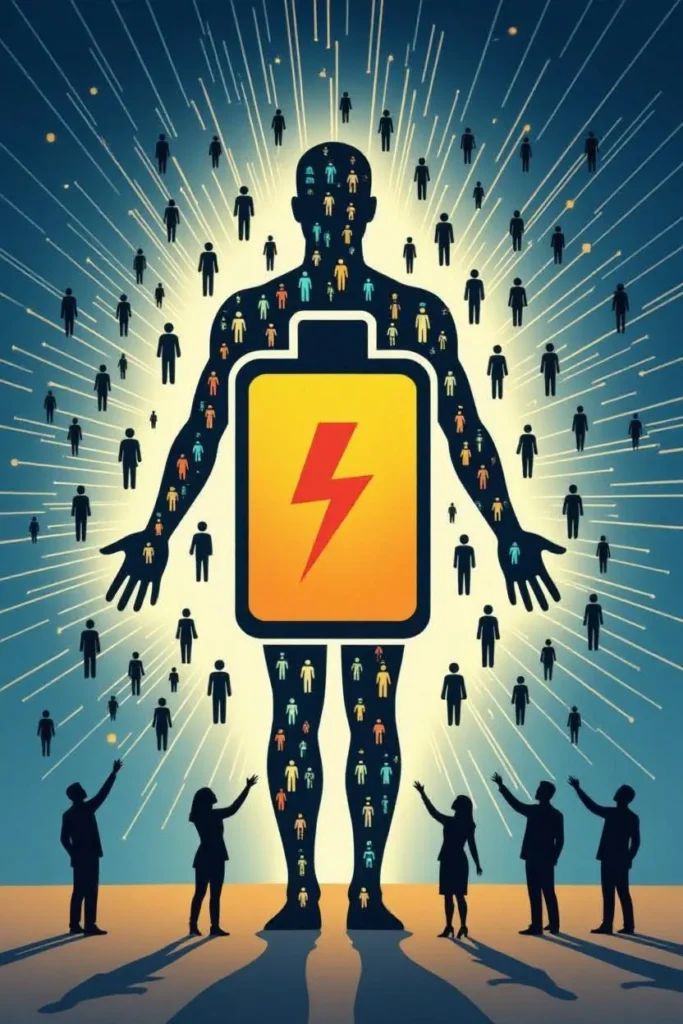
Have you ever wondered why you enjoy detailed plans, while a friend loves being spontaneous? Or why some people are the life of the party, while others recharge with a quiet evening alone?
For years, psychologists have used a powerful, science-backed system to understand these core differences. It is called The Big Five personality traits.
Often known by the acronym OCEAN, this model is the most respected and widely used today. It is not a rigid “type” that puts you in a box. Instead, it sees your personality as a range across five key areas.
Understanding where you fall on each of these five scales is a huge step toward self-awareness. It helps you see your natural strengths. It also shows you your true areas for growth. This guide will break down each of the Big Five traits in simple terms.
Curious where you fit in? Skip the theory and discover your personality profile right now. Take our new, quick, and interactive quiz: The Quick OCEAN Profile Estimator.
What is the Big Five (OCEAN) Model?
The Big Five is a system that measures personality on five main spectrums. It’s the most respected model in psychology. This is because it has been proven to be reliable in many different countries and cultures. It gives you a map of your own unique psychological landscape.
The 5 Traits Explained in Detail
1. Openness to Experience

- What it is: This trait is about being open to new things. It covers your imagination, creativity, and curiosity. People high in openness are often creative and love new ideas. People low in openness are more practical and prefer what they already know.
- People high in Openness are often:
- Imaginative and creative
- Adventurous and willing to try new things
- Curious about the world
- People low in Openness are often:
- Traditional and down-to-earth
- Practical and focused on what works
- Prefer clear routines
2. Conscientiousness

- What it is: This trait is about being organized, reliable, and disciplined. It is the trait most strongly linked to success in school and at work.
- People high in Conscientiousness are often:
- Organized and efficient
- Dependable and self-disciplined
- Goal-oriented and careful
- People low in Conscientiousness are often:
- Spontaneous and flexible
- Easy-going
- Sometimes careless or messy
3. Extraversion

- What it is: This trait is about where you get your energy. Extroverts get energy from being with other people. Introverts (who are low in extraversion) get energy from spending time alone.
- People high in Extraversion are often:
- Outgoing and sociable
- Energetic and talkative
- Assertive and comfortable in groups
- People low in Extraversion (Introverts) are often:
- Reserved and thoughtful
- Enjoy quiet time to recharge
- Prefer deep talks with a few people
4. Agreeableness

- What it is: This trait is about being cooperative and kind. It’s about how well you get along with other people.
- People high in Agreeableness are often:
- Cooperative and good-natured
- Compassionate and trusting
- Helpful and patient
- People low in Agreeableness are often:
- Competitive and analytical
- More likely to challenge others
- Sometimes skeptical or direct
5. Neuroticism

- What it is: This trait is about how you handle negative emotions. People high in neuroticism tend to feel stress and worry more often.
- People high in Neuroticism are often:
- Anxious and prone to worry
- Sensitive and emotionally reactive
- Easily stressed
- People low in Neuroticism (often called Emotionally Stable) are often:
- Calm and secure
- Resilient under pressure
- Even-tempered
Quick Quiz: What’s Your Dominant OCEAN Trait?
This is not a scientific test. It’s a quick exercise to get you thinking. For each question, choose the answer that feels most like you.
1. When you face a new experience, you are more likely to:
a) Dive in with curiosity and excitement. (Openness)
b) Prefer the comfort of your usual routine. (Lower Openness)
2. When a project has a deadline, you:
a) Create a detailed plan and finish early. (Conscientiousness)
b) Do your best work under last-minute pressure. (Lower Conscientiousness)
3. After a long week, you recharge by:
a) Going out and socializing with friends. (Extraversion)
b) Spending a quiet evening at home. (Introversion / Lower Extraversion)
4. When a team member is upset, your first instinct is to:
a) Focus on their feelings and offer support. (Agreeableness)
b) Focus on the problem and find a logical solution. (Lower Agreeableness)
5. When something unexpected goes wrong, you tend to:
a) Feel stressed and worry about what will happen. (Neuroticism)
b) Stay calm and focus on the next step. (Emotional Stability / Lower Neuroticism)
Tally your answers! The trait that appeared most often might be your most dominant one. This simple exercise is a great starting point for deeper self-reflection.
Understanding your Big Five profile is the first step. Learn how to apply this knowledge to improve your strengths and manage your weaknesses in our Ultimate Guide to Personality Development.
How Can You Use the Big Five Model?
- For Better Self-Awareness: Knowing your profile helps you understand why you act in certain ways. It helps you see which environments you will do best in.
- For Your Career: Certain traits are a good fit for certain jobs. High Conscientiousness is great for accountants. High Extraversion is a plus for sales.
- For Stronger Relationships: Understanding the profile of your partner or colleague can improve your empathy and communication.
Your Personality is a Map, Not a Destiny
The Big Five model is not meant to label you. It is meant to give you a map of your own mind. It gives you a clear language to understand your natural tendencies.
By understanding your unique profile, you can learn to use your strengths. You can also work on your challenges. This helps you build a life that is in harmony with your true self.
Now that you understand the theory behind the five big traits, it’s time to discover yours.
Use our free tool, The Quick OCEAN Profile Estimator, to get your estimated personality profile in less than 2 minutes.
Which of the Big Five traits do you find most interesting in yourself? Share your thoughts in the comments!


